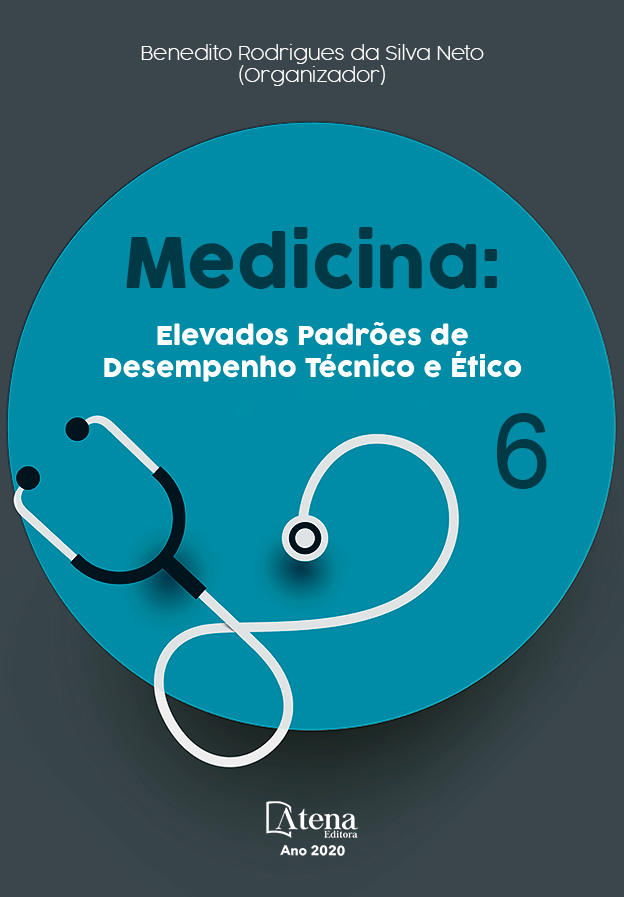
SÍNDROME DE CAROLI DIAGNOSTICADA EM IDADE ADULTA: RELATO DE UM CASO CLÍNICO
A doença de Caroli é uma malformação congênita das vias biliares intra hepáticas e que apresenta sintomatologia variável. Relato de caso: paciente do sexo feminino, 72 anos, com histórico de glaucoma e linfoma primário de tecido linfóide associado à mucosa, apresentava-se em 2014 com icterícia, colestase e citólise. A colangiorressonância revelou dilatação dos terços médio e distal do ducto colédoco, além de estenose do terço proximal e das vias intra hepáticas, intercalando com dilatações. Além de rara, a doença de Caroli pode ter diagnóstico difícil e atrasado. Comumente, divide-se em tipo 1, quando a dilatação é a única alteração, e tipo 2 (Síndrome de Caroli): com o aditivo de maiores alterações hepáticas, como fibrose hepática congênita. Dentre as patologias associadas estão o colangiocarcinoma e a doença policística do rim. Os tratamentos atualmente empregados dependem se a doença faz acometimento localizado ou difuso. No primeiro caso, é lançado mão da hemi-hepatectomia ou ressecção de lobo acometido, enquanto no segundo tipo o transplante hepático é o tratamento definitivo. Também é utilizado o ácido ursodesoxicólico. O manejo deve ser feito com avaliações clínicas e exames de imagem periodicamente.
SÍNDROME DE CAROLI DIAGNOSTICADA EM IDADE ADULTA: RELATO DE UM CASO CLÍNICO
-
DOI: 10.22533/at.ed.69320091122
-
Palavras-chave: Doença de Caroli; Relato de Caso; Colangiorressonância; Síndrome de Caroli; Fibrose Hepática Congênita.
-
Keywords: Caroli’s Disease; Case report; Cholangioressonance; Caroli’s syndrome; Congenital hepatic fibrosis.
-
Abstract:
Caroli's disease is a congenital malformation of the intrahepatic bile ducts and has variable symptoms. Case report: Female patient, 72 years old, with a history of glaucoma and primary mucosa associated lymphoid tissue lymphoma, presented in 2014 with jaundice, cholestasis and cytolysis. Cholangioressonance showed dilation of the middle and distal thirds of the choledochal duct, in addition to stenosis of the proximal third and intrahepatic routes, alternating with dilatations. Besides rarity, Caroli's disease may have a difficult and delayed diagnosis. It is commonly divided into type 1, when dilation is the only modification, and type 2 (Caroli’s syndrome): with the addition of major liver changes, such as congenital hepatic fibrosis. Among the associated pathologies are cholangiocarcinoma and polycystic kidney disease. The treatments currently used depend on whether the disease is localized or diffuse. In the first type, hemi-hepatectomy or resection of the affected lobe is made, while in the second type, liver transplantation is the definitive treatment. Ursodeoxycholic acid is also an option. The management must be done by clinical evaluation and imaging periodically.
-
Número de páginas: 12
- Martin Zavadinack Netto
- Pâmella Andressa Pereira El Majzoub
- Fernanda de Silva Miliorini
- Letícia Maria Schmitt Moreira Ribeiro do Nascimento
- Igor Passareli Jordão
- Vitor Zanata Adacheski
- João Paulo Fais
- Carolina Cortezzi RIbeiro Do Nascimento


